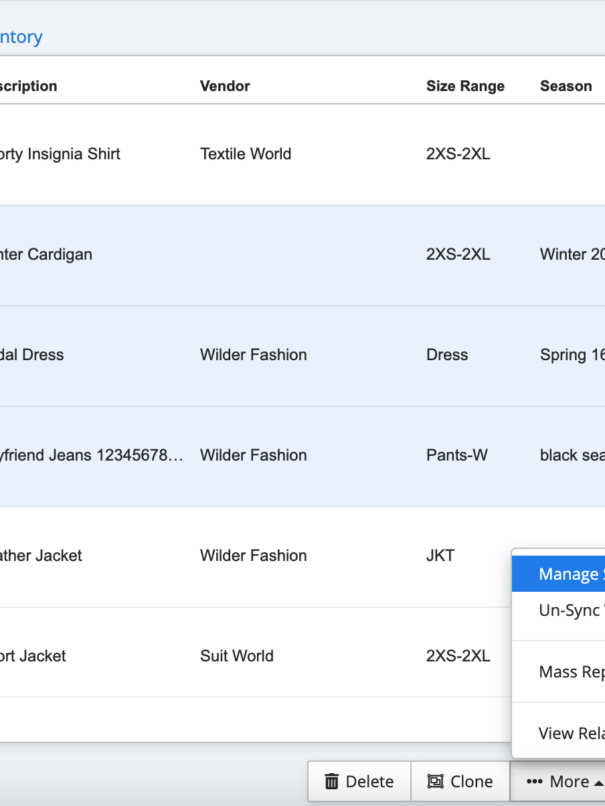Determining prices can be a challenge for any company, from analyzing the market trends and considering labor costs to thinking of every single penny that goes to transport and storage. But when you’re buying products or materials in bulk, the situation can get even more complicated.
Calculating a wholesale price is a delicate task. A product needs to be priced high enough from the supplier or wholesaler’s standpoint to maximize earnings. On the other hand, in order to increase their earnings, your clients (retailers) want to have access to affordable goods in order to maximize their own profits.
So, how do we strike the perfect balance? In this post, we’re talking about how to calculate wholesale price so that both you and your customers are satisfied.

Image by katemangostar on Freepik
What is a Wholesale Price?
Wholesale pricing involves setting a price for products at the wholesale stage of selling. When a manufacturing company wants to sell to bulk retailers or wholesalers, it usually charges the wholesale price. A bulk distributor may also set the wholesale price when selling to smaller retailers.
Since commodities are typically sold in large quantities at the wholesale stage, the wholesale price is set as low as possible in order to allow other participants in the supply chain to make a profit. This is why, when calculating wholesale price, you should be able to make a profit from the sale of the items in addition to recovering the costs of manufacturing and storing them. In order to achieve this, you should take into account several elements, such as the product’s average market pricing, the type of demand, what your competitors are doing, etc.
Because of everything said above, calculating wholesale prices can be quite a challenging task.
Wholesale price vs retail price
So, what is the difference between wholesale vs retail pricing? Retail pricing is essentially the item’s final price, i.e. the price that the final consumer pays when making a purchase.
Just like a wholesaler sets the wholesale price, a retailer sets the retail price. In some cases, wholesalers may suggest a retail price. This is called manufacturer-indicated retail price (MSRP) or recommended retail price (RRP). However, the final pricing is ultimately in the retailers’ hands.
Compared to wholesale prices, retail prices often feature a greater markup and profit margin. This is due to the fact that they will have to factor in extra selling expenses such as rent, employee salaries, and advertising in the final pricing.
While wholesale prices can change depending on the quantity purchased (bulk distributors may offer a discount for larger orders), retail prices are typically constant regardless of the number of items purchased. However, if sales aren’t moving as quickly as they’d like, a retail store may also provide a discount to boost sales.
How to Calculate Wholesale Price
Let’s look at how to calculate wholesale prices for your products.
1. Research your market and competition
Before you set any product prices, determine your market segment and your place in it. For instance, are you a designer brand, a sports brand, or a contemporary one? This will help you establish how your target market views you, which eventually has an impact on your pricing.
Look into every wholesale product that competes with your products. A thorough understanding of the competition is necessary to fully comprehend the unique value of your products. Talk to your clients and end consumers, look for complementary goods, and learn how and when people buy your products. If done properly, this research will allow you to clearly understand why your clients choose to work with you.
2. Calculate your COGM
COGM (cost of goods manufactured) is the total cost of creating or purchasing a product and includes the cost of the raw materials, labor, as well as any other expenses required to put the product on the market, such as handling and shipping. The following formula can be used to calculate a product’s COGM:
COGM = Total Cost of Materials + Total Cost of Labor + Additional Costs and Overhead
3. Set your wholesale price
When determining your wholesale price, start by doubling your cost of goods. By doing this, you can make certain that your wholesale profit margin—the gross profit a store makes when an item is sold—is at least 50%. Retail clothing brands often aim for a 30% to 50% wholesale profit margin.
Strategies for Calculating Wholesale Price
Which approach to wholesale pricing you choose will depend on your business, your goals, as well as the information that your market research reveals. That being said, here are some strategies for wholesale pricing you can use:
Cost-plus pricing
With this pricing model, a product’s price is determined by taking into account all of its costs plus a profit margin.
A benefit of this pricing strategy is that it guarantees a profit on every item a wholesaler is selling. However, it might not be the best choice for goods that could expire quickly or whose production costs are prone to frequent fluctuations.
Surge pricing
Surge pricing is the practice of raising a product or service’s price in response to rising demand. In other words, low demand results in low prices for the product, whereas high demand causes the price of the product to rise exponentially.
This pricing approach is useful if there are peak hours, days, weeks, or seasons when demand for a wholesaler’s goods is highest. However, it should be noted that if prices rise too dramatically, this surge pricing could also result in strong customer backlash.
Value-based pricing
Value-based pricing is a demand-based pricing strategy that works by determining the customer’s willingness to pay for a certain product. According to a study, consumers are willing to spend more on goods they believe are worth the cost. However, setting high prices has the drawback of perhaps creating a limited market for your goods.
Competitor-based pricing
As the name implies, this pricing strategy uses competitor pricing as a benchmark. To draw in more wholesale customers, you can either set prices at a level that is equal to those of your competitors or lower.
If you can efficiently manage your costs while selling at a lower price, you have a chance of achieving brisk sales and solid profits. However, for smaller wholesalers or those who are just starting out, this strategy could be challenging to implement and maintain.

Image by d3images on Freepik
Common Challenges When Calculating Wholesale Prices
As mentioned before, there is a lot that goes into determining a wholesale price. Here are some of the most common challenges that wholesalers face when calculating wholesale prices.
- Competition. Competition among wholesalers can be quite fierce in certain industries. This means that you will either need to set your product’s price at the current market rate or go below it. However, you should keep in mind that by doing this, you might start a price war and drive costs even lower.
- Discounts. Although discounts can be very effective sales tools, you need to be very careful when applying them. If you offer small discounts, your clients might not be tempted to buy. On the other hand, if you provide discounts that are too steep, you run the risk of losing all of your profit.
- Seasonality. Seasonality refers to fluctuations in sales caused by external factors that occur on a predictable schedule around the same time every year. This means charging different prices for your products depending on whether it is low season or high season, which can be quite challenging.
- Brand identity and brand recognition. The value of your products and how your customers perceive your company are both largely determined by pricing. However, it might be difficult to strike the ideal balance between a price that accurately reflects the worth of your goods and a price that customers are prepared to pay.
Bottom Line
Pricing is consistently cited by business owners as one of the difficulties faced by successful wholesale companies.
In this article, we’ve explained what wholesale pricing is and offered a few tips on how to calculate wholesale price. It’s up to you which of the suggested methods you choose but whichever route you go down, the key takeaway remains the same: the success of your company depends critically on choosing the appropriate wholesale price.
Fortunately, if you have the necessary tools and a thorough understanding of how wholesale pricing operates, you are in a stronger position to set wholesale prices that benefit your business.







